Arborescences – Painting a forest with watercolor
August 13, 2013 2025-02-09 18:06Arborescences – Painting a forest with watercolor

Arborescences – Painting a forest with watercolor
Painting a forest with watercolor can seem tricky but if you take it one step at a time, you can get pretty good results.
This watercolor was painted directly on a paper that was mounted on board. To read more about this technique , click here: Mounting watercolor paper on board.
The advantage of mounting watercolor paper on board before painting on it with watercolors is that mounting your paper withh stretch it at the same time.
Here is how you can paint a forest with watercolor

Here is the watercolor palette I used: Daniel Smith Burnt sienna and French Ocher, Da Vinci Prussian blue, Sap Green and Cadmium Yellow Lemon, Holbein Turquoise Light and Permanent Red.
Start by making a light graphite drawing on your paper, making sure you don’t erase too much as it could damage the paper. You can draw free hand, use a gris system or a lightbox if you are working from a reference picture.
You might also be interested in: How to make your own lightbox for tracing on watercolor paper
I am a Blick Art Materials affiliate and I receive a small compensation for sales. That does not effect in any way the cost of the purchaser’s order but it helps me keeping the content of this blog free.

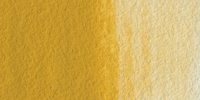 |
Da Vinci Artists’ Permanent Watercolors, 292 Yellow Ochre, 15 mlDa Vinci paints are exciting, intense, and rated among the best in the world for quality. The paints are permanent, with the highest tinting strength and pigment concentration available, and a creamy consistency for smooth, easy dispersion with water. |

Add a bit of paint and water in your palette wells and let the paint dissolve for a bit. While the paint is dissolving in the water, you can go to the next step, which is preserving some white areas on your paper.

When my drawing is done, the first step is to preserve some whites with liquid frisquet. Masking fluid is very convenient as it will allow you to paint on top of the masked areas that would be too small or intricate to avoid while painting and leave the paper untouched. This is particularly important as watercolor is translucent and the white in your painting are the white of the paper. So when painting with watercolor, you need to know since the beginning, when the white areas will be located in your painting.
Let it air dry as the heat from an hair dryer would cause the masking fluid to adhere too much to the paper.
I am a Blick Art Materials affiliate and I receive a small compensation for sales. That does not effect in any way the cost of the purchaser’s order but it helps me keeping the content of this blog free.

 |
Daler-Rowney Masking FluidThis fluid is used to create striking white highlights or to mask areas for overpainting at a later stage. It forms a fast-drying, water-resistant film on watercolor paper and board, and is easily removed when dry. |
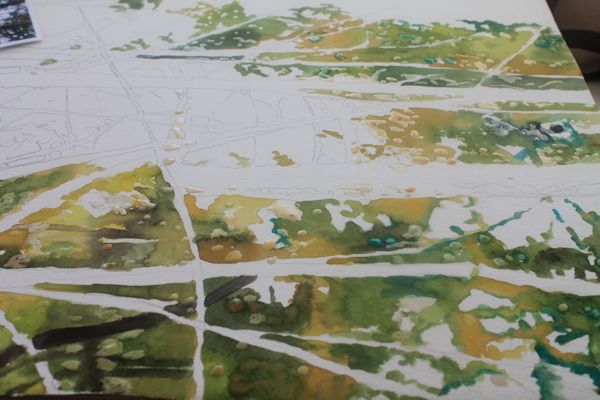
Then paint the foliage using a wet in wet technique, letting the colors mix on the paper.
When mixing colors with watercolors, you can:
- Mix them directly in your palette
- layer them
- Mix them wet into wet by painting 2 colors one next to the other and letting them mix on your paper.
Mixing colors wet into wet for the forest foliage will help add complexity to your painting and give the illusion of foliage.

Painting wet into wet with watercolors will also avoid the formation of too many hard edges, that would look unnatural in a forest painting.
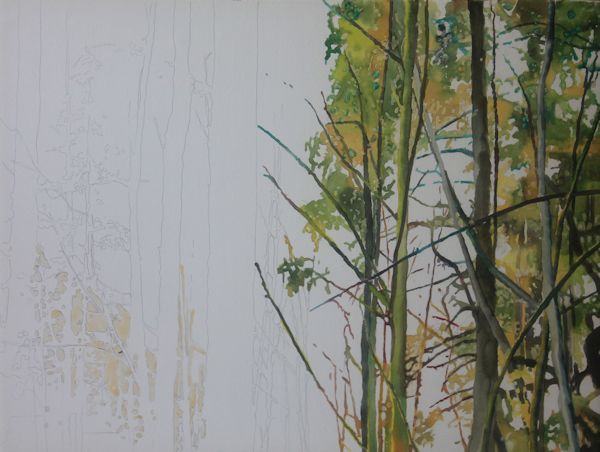
Paint slowly, progressing along the painting one small area at a time. Here I am painting from left to right, being careful not to smudge the areas I just painted. I also paint the tree trunks, once the foliage area around them had time to dry, also mixing watercolors wet into wet.
When you are done, take off the masking fluid by pulling it off r with an eraser.
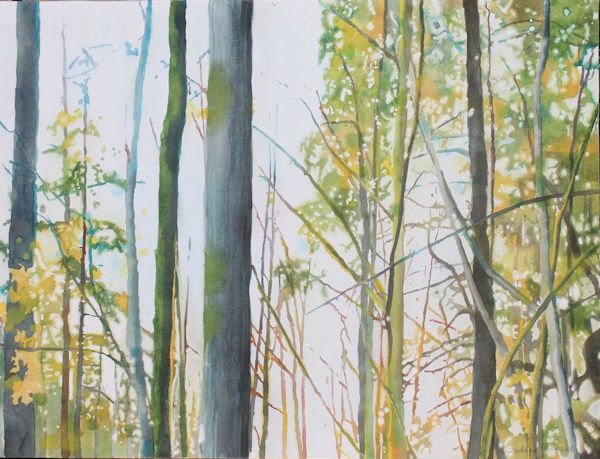
Arborescences, Watercolor on paper mounted on board, 20 x 24 inches
The finished painting. if your masking fluid left too many hard edges, you can soften them with a stiff brush and a bit of water.
You can either varnish your painting or protect it with a layer of wax.
You might also be interested by: How to apply Dorland’s wax medium on watercolor


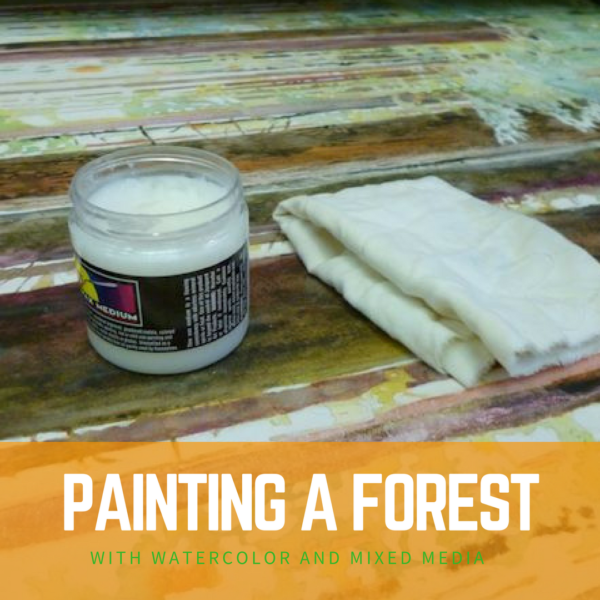
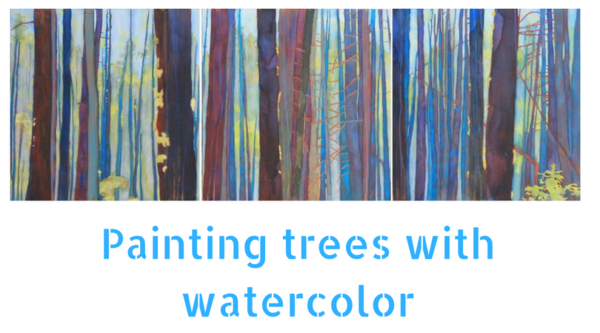
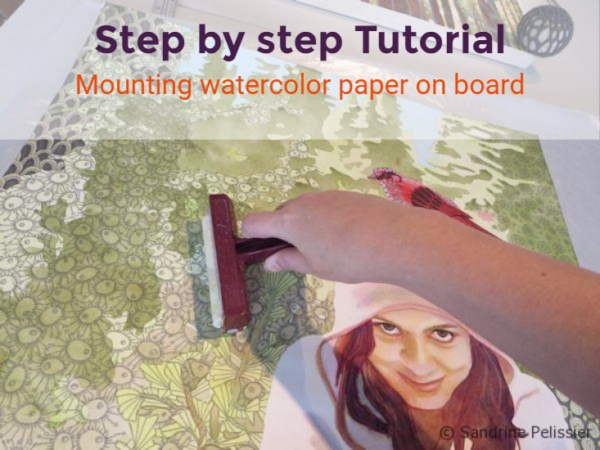

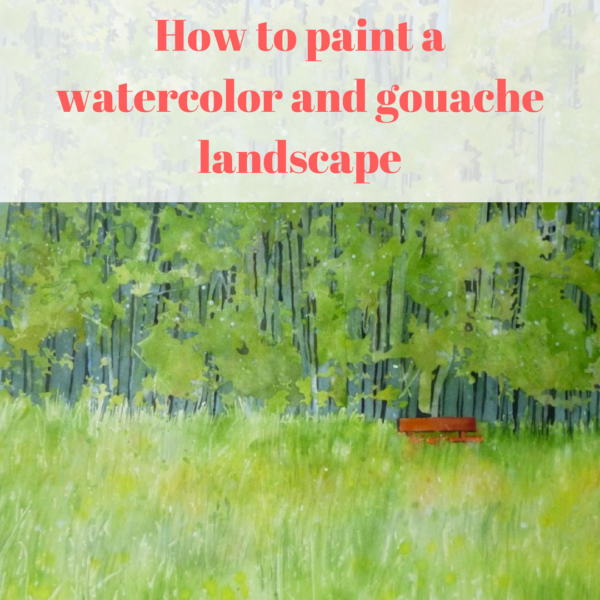
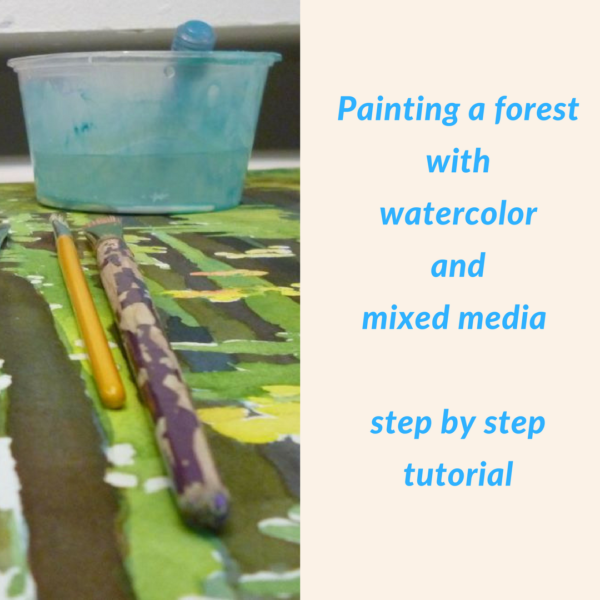
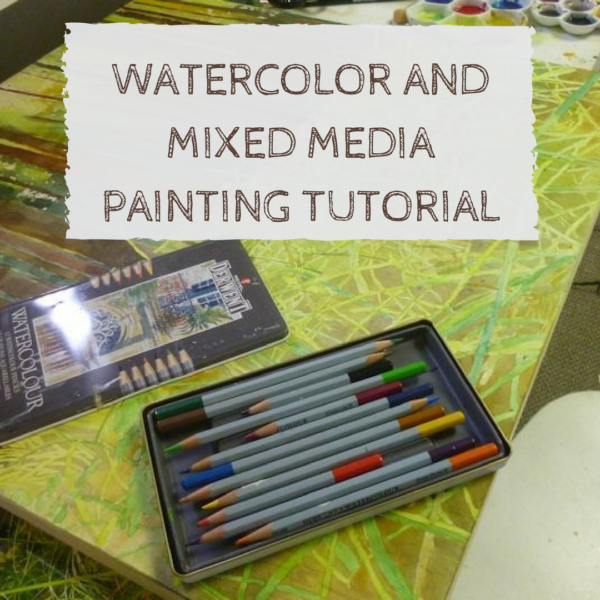

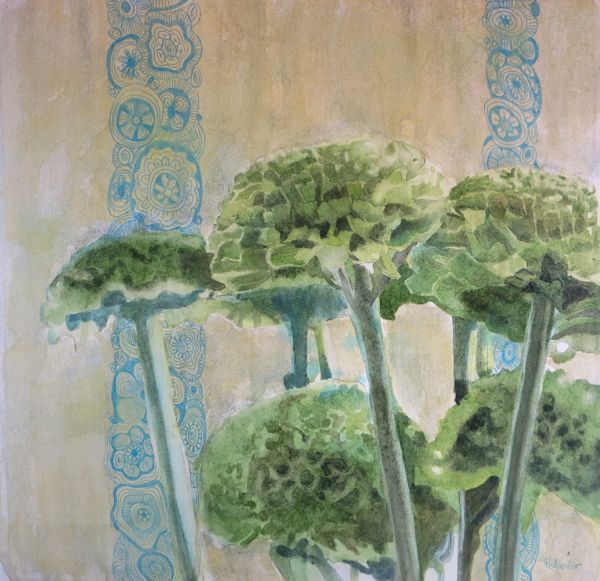


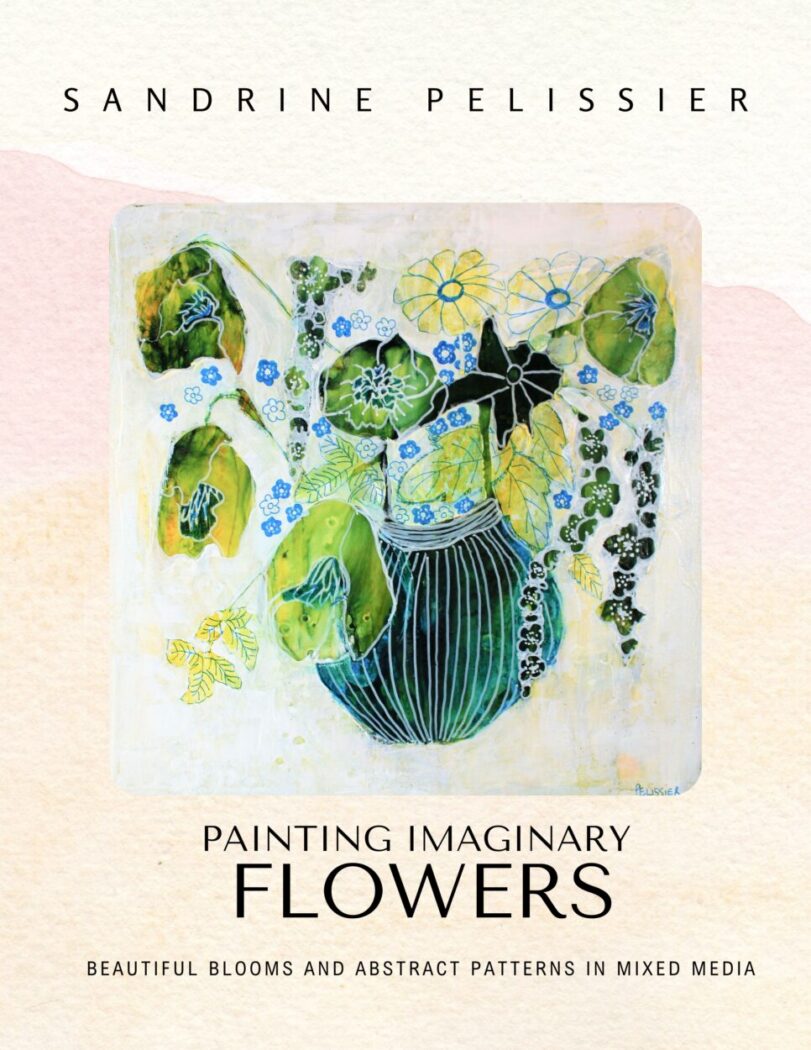


Comments (3)
Morning Walk, Liquid Acrylic and Markers on canvas, step by step painting tutorial
[…] ArborescencesWatercolor on paper mounted on board […]
Carolyn
How do you seal the watercolor after it is completed so it doesn’t have to be framed?
Thank you
Sandrine Pelissier
Hi Carolyn, I am either applying varnish or a wax finish.